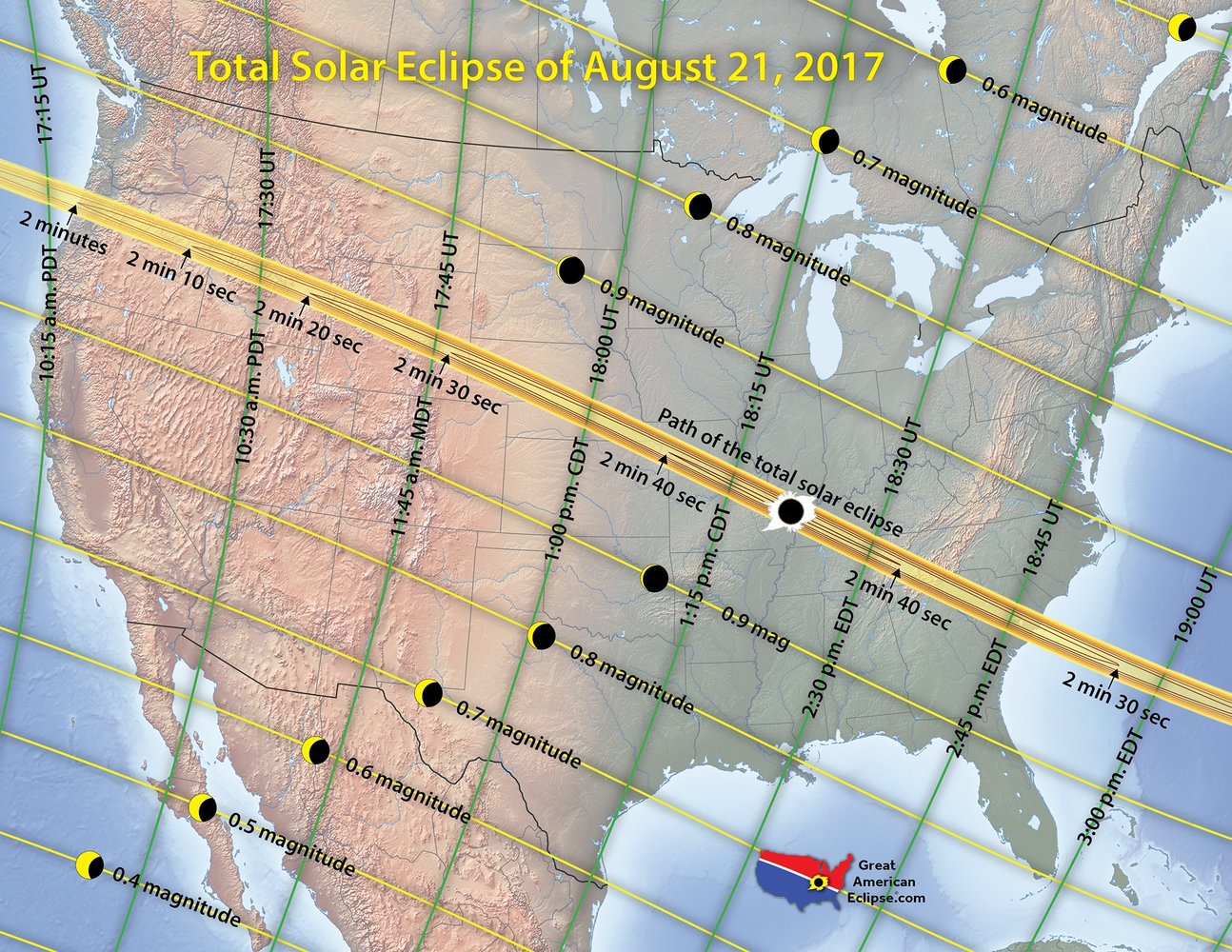On Aug. 21, 2017, sky-gazers in North America will have a chance to see one of the most stellar celestial events visible from Earth: a total eclipse of the sun!

Find out everything you need to know about how to safely* watch the eclipse and learn about the history and mystery surrounding these rare events on NASA's Eclipse 2017 website. (*NEVER look directly at the sun without proper solar filters.)
Want to see what the eclipse will look like where you live? Or better yet, find the best spot to watch the eclipse? Check out NASA's Eclipse 2017 visualization tool, which lets you explore the view from any location in the world.
And check out these eclipse resources for students and educators:
• How to Make a Pinhole Camera: Learn how to make your very own pinhole camera to safely see a solar eclipse in action!
• Moon Phases (grades 1-6): Students learn about the phases of the moon by acting them out.
• Pi in the Sky 4 (grades 6-12): In this illustrated problem set, students use the mathematical constant pi to solve real-world science and engineering problems related to craters on Mars, a total solar eclipse, a daring orbit about Saturn, and the search for habitable worlds.
• Exploring Exoplanets with Kepler (grades 6-12): Students use math concepts related to transits to discover real-world data about Mercury, Venus and planets outside our solar system.
2001 Pan American Plaza, San Diego, CA
Phone: 619.234.8291
Información En Español
Contact Us
We would like to thank all our sponsors who help us make a difference. Click here to view all who help us.

The San Diego Air & Space Museum is a 501(c)(3) non-profit organization. Federal Tax ID Number 95-2253027.
